Bulk Cleaning Products
Cleaning Products: How to Find the Ideal Option for Every Need and Budget
Cleaning products are essential elements of our daily lives, contributing significantly to cleanliness and hygiene standards. In this blog, we will explore various aspects related to cleaning products, including types available, ingredient considerations, environmental impacts, safe handling practices, and final recommendations. Our goal is to provide you with comprehensive information to make informed and responsible decisions when selecting and using cleaning products in your home or workplace. Let’s delve into the world of cleaning products and discover how to maintain a clean and healthy environment effectively.
Table of Contents
Identifying Specific Needs
When it comes to choosing the right cleaning products, it’s crucial to identify your specific needs to ensure you’re using the most effective solution. Whether you’re dealing with tough kitchen grease, stubborn bathroom grime, or delicate fabrics, understanding your requirements is key to finding the ideal cleaning product.
Assess Your Cleaning Challenges
Start by assessing the cleaning challenges you face in your home or workspace. Are you struggling with grease buildup on kitchen countertops or soap scum in the shower? Do you need a gentle yet effective detergent for your favorite silk blouse? Identifying these specific challenges will guide you in selecting the right products.
Consider Surface Types
Different surfaces require different cleaning approaches. For instance, cleaning a hardwood floor requires a different product than cleaning a tile bathroom floor. Consider the materials and finishes of the surfaces you’re cleaning to choose products that are safe and effective for those surfaces.
Addressing Health and Environmental Concerns
If you have allergies, sensitivities, or environmental concerns, it’s essential to factor these into your product selection. Look for products labeled as hypoallergenic, fragrance-free, or environmentally friendly. These options can help address your health and sustainability priorities.
Tailoring Products to Usage Frequency
Another aspect to consider is how often you’ll be using the cleaning products. For frequently used areas like kitchens and bathrooms, investing in durable, multi-purpose cleaners may be beneficial. On the other hand, for occasional cleaning tasks, such as deep cleaning upholstery or curtains, specialized products may be more suitable.
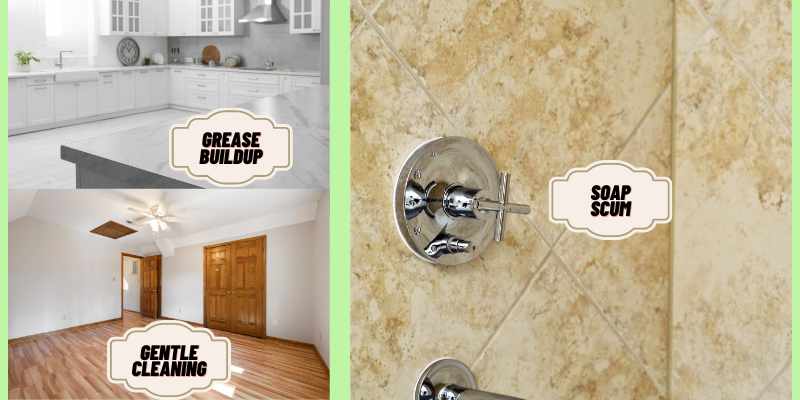
Budget Considerations
When exploring cleaning products, it’s essential to consider your budget to make informed purchasing decisions. By evaluating your budgetary constraints, you can find effective cleaning solutions without overspending. Here are key points to consider when it comes to budget considerations in choosing cleaning products:
1. Determine Your Budget Range
Start by defining a budget range that you’re comfortable with for purchasing cleaning products. Consider how much you’re willing to spend monthly or annually on these products, keeping in mind other household expenses.
2. Prioritize Essential Cleaning Needs
Identify the essential cleaning needs that require immediate attention. Focus on products that address these primary needs within your budget range. For example, if you prioritize disinfection, allocate a portion of your budget to high-quality disinfectants.
3. Compare Prices and Sizes
Compare prices across different brands and product sizes. Often, buying larger quantities can be more cost-effective in the long run, so consider bulk options if feasible. However, ensure that you’ll use the product before it expires or loses effectiveness.
4. Look for Deals and Discounts
Keep an eye out for deals, promotions, and discounts offered by retailers or manufacturers. Subscribe to newsletters or follow social media pages of cleaning product brands to stay updated on special offers.
5. Consider Long-term Cost Savings
While budgeting for cleaning products, consider the potential long-term cost savings. Investing in high-quality, durable products may initially seem more expensive but can save money over time by requiring fewer replacements and delivering better results.
6. Explore DIY and Eco-friendly Options
Explore do-it-yourself (DIY) cleaning solutions using household ingredients like vinegar, baking soda, and lemon. These options are often budget-friendly and environmentally sustainable. Additionally, consider eco-friendly cleaning products that prioritize both effectiveness and environmental responsibility.
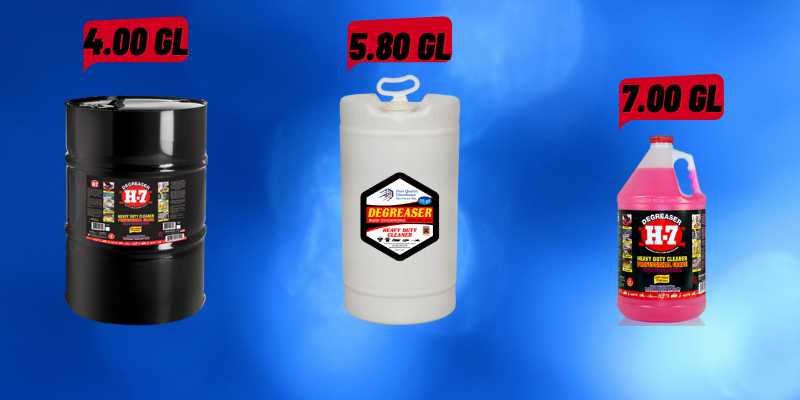
Types of Available Cleaning Products
When it comes to cleaning, there is a wide range of products available to suit different needs and preferences. Understanding the types of cleaning products can help you choose the right ones for your specific cleaning tasks. Here are the main categories of cleaning products you may encounter:
1. All-Purpose Cleaners
All-purpose cleaners are versatile products designed to tackle various surfaces and messes. They are suitable for cleaning countertops, appliances, floors, and more. Look for all-purpose cleaners that offer effective cleaning while being safe for the surfaces you’re cleaning.
2. Specialty Cleaners
Specialty cleaners are formulated for specific cleaning tasks or surfaces. Examples include kitchen cleaners for grease and food stains, bathroom cleaners for soap scum and mold, glass cleaners for streak-free windows and mirrors, and carpet cleaners for deep carpet stains.
3. Disinfectants and Sanitizers
Disinfectants and sanitizers are crucial for killing germs and bacteria, especially in high-touch areas like kitchens and bathrooms. Look for products labeled as disinfectants or sanitizers with proven effectiveness against common pathogens.
4. Laundry Detergents
Laundry detergents are designed to clean and refresh clothing, linens, and other washable fabrics. Choose detergents that are suitable for your laundry needs, such as those for sensitive skin, stain removal, or eco-friendly options.
5. Eco-Friendly Cleaning Products
Eco-friendly cleaning products are becoming increasingly popular due to their focus on sustainability and reduced environmental impact. These products often use natural ingredients and biodegradable formulas while maintaining effective cleaning power.
6. Cleaning Tools and Accessories
In addition to cleaning products, various tools and accessories can aid in cleaning tasks. Examples include sponges, scrub brushes, microfiber cloths, mops, vacuum cleaners, and steam cleaners. Select tools that complement your chosen cleaning products for efficient cleaning results.
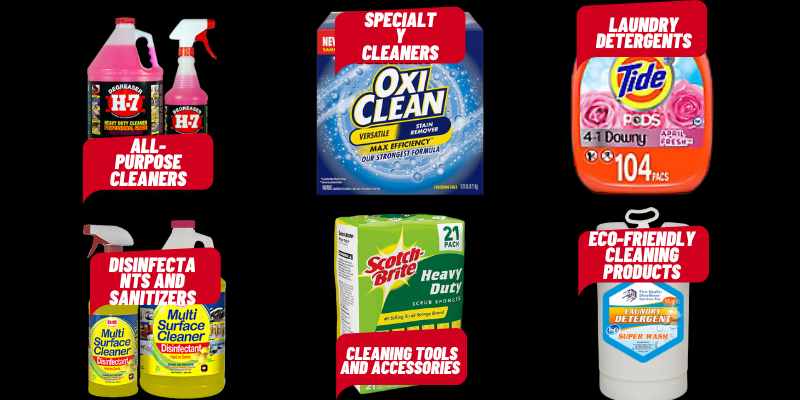
Comparative Analysis of Popular Brands
When shopping for cleaning products, it’s common to encounter a variety of brands, each claiming to offer the best cleaning solutions. Conducting a comparative analysis of popular brands can help you make informed decisions and choose products that meet your cleaning needs effectively. Here’s a breakdown of key factors to consider when comparing popular cleaning product brands:
1. Effectiveness
Evaluate how well each brand’s products perform in terms of cleaning power. Consider factors such as stain removal, grease dissolving capabilities, disinfection effectiveness, and overall cleaning performance.
2. Safety and Ingredients
Examine the safety of the ingredients used in each brand’s products. Look for brands that prioritize using non-toxic, eco-friendly, and biodegradable ingredients. Consider if the products are safe for use around children, pets, and sensitive individuals.
3. Range of Products
Assess the variety of cleaning products offered by each brand. Look for brands that offer a comprehensive range of products, including all-purpose cleaners, specialty cleaners, disinfectants, laundry detergents, and eco-friendly options.
4. Customer Reviews and Ratings
Check customer reviews and ratings for each brand’s products. Pay attention to feedback regarding effectiveness, safety, ease of use, and overall satisfaction. Positive reviews and high ratings can indicate a reliable and trustworthy brand.
5. Price and Value
Compare the pricing of similar products across different brands. Consider the value offered in terms of product size, concentration, durability, and long-term cost savings. Look for brands that provide competitive pricing without compromising quality.
6. Environmental Impact
Consider each brand’s commitment to sustainability and environmental responsibility. Look for brands that use recyclable packaging, minimize waste production, and support eco-friendly practices throughout their production and distribution processes.

Ingredients to Consider
When selecting cleaning products, it’s essential to pay attention to the ingredients used in their formulations. Understanding the key ingredients to consider can help you make informed choices and ensure the products you use are safe, effective, and environmentally friendly. Here are the ingredients you should prioritize and consider when evaluating cleaning products:
1. Active Cleaning Agents
Look for cleaning products that contain effective active ingredients such as surfactants, enzymes, and acids. Surfactants help lift dirt and grime from surfaces, enzymes break down organic stains, and acids are effective for removing mineral deposits and soap scum.
2. Fragrances
Consider the presence of fragrances in cleaning products, especially if you or your household members have sensitivities or allergies. Opt for products labeled as fragrance-free or with mild, natural scents to minimize potential respiratory irritations.
3. Harsh Chemicals to Avoid
Avoid cleaning products that contain harsh chemicals such as ammonia, bleach, phosphates, and formaldehyde. These chemicals can be harmful to human health, irritate the skin and respiratory system, and contribute to indoor air pollution.
4. Eco-Friendly and Biodegradable Ingredients
Choose cleaning products that feature eco-friendly and biodegradable ingredients. These include plant-based surfactants, essential oils, and natural solvents. Eco-friendly products are safer for the environment, as they break down more easily and reduce chemical pollution.
5. pH Balance
Consider the pH balance of cleaning products, especially for surfaces like marble, granite, and hardwood floors. Neutral pH or pH-balanced cleaners are gentler on these surfaces and help prevent damage or discoloration.
6. Safety Certifications
Look for cleaning products that have safety certifications, such as EPA Safer Choice, Green Seal, or EcoLogo. These certifications indicate that the products have undergone rigorous testing for safety, efficacy, and environmental impact.
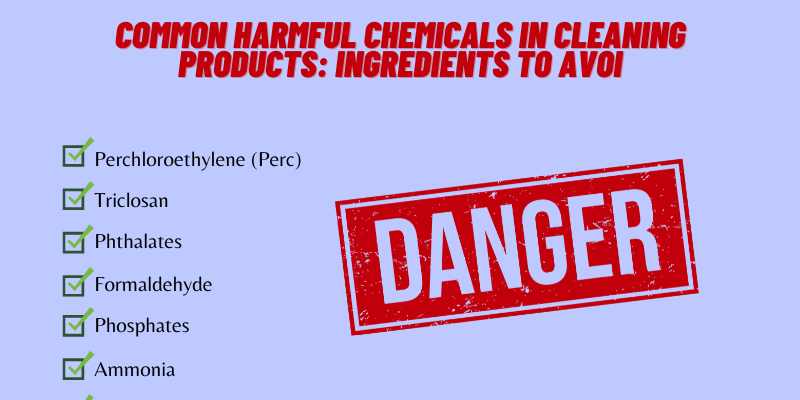
Tips for Smart Purchasing
When it comes to purchasing cleaning products, making informed decisions is key to ensuring effectiveness, safety, and value for your money. Here are some smart purchasing tips to help you choose the right cleaning products that meet your needs:
1. Read Labels Carefully
Take the time to read product labels thoroughly. Look for key information such as ingredients, usage instructions, safety warnings, and environmental certifications. Focus on products that prioritize transparency and provide clear and detailed labeling.
2. Choose Multi-Purpose Products
Opt for multi-purpose cleaning products whenever possible. These versatile cleaners can tackle a variety of surfaces and tasks, reducing the need for multiple specialized products. They also save space and money in your cleaning arsenal.
3. Consider Concentrated Formulas
Concentrated cleaning formulas are often more economical and environmentally friendly. They require less packaging and water, and a little goes a long way in terms of cleaning power. Dilute concentrated formulas according to the manufacturer’s instructions for optimal results.
4. Look for Eco-Friendly Options
Consider eco-friendly cleaning products that use natural ingredients, biodegradable formulas, and sustainable packaging. Look for certifications such as EPA Safer Choice, Green Seal, or EcoLogo to ensure the products meet rigorous environmental standards.
5. Check for Value and Size Options
Compare the value and size options of different cleaning products. Sometimes, buying larger quantities or bulk packages can offer cost savings per unit. However, ensure that you’ll use the product before it expires or loses effectiveness to avoid waste.
6. Read Customer Reviews and Ratings
Consult customer reviews and ratings to gather insights from other users’ experiences. Pay attention to feedback regarding product performance, safety, fragrance, ease of use, and overall satisfaction. Positive reviews can indicate a reliable and effective product.
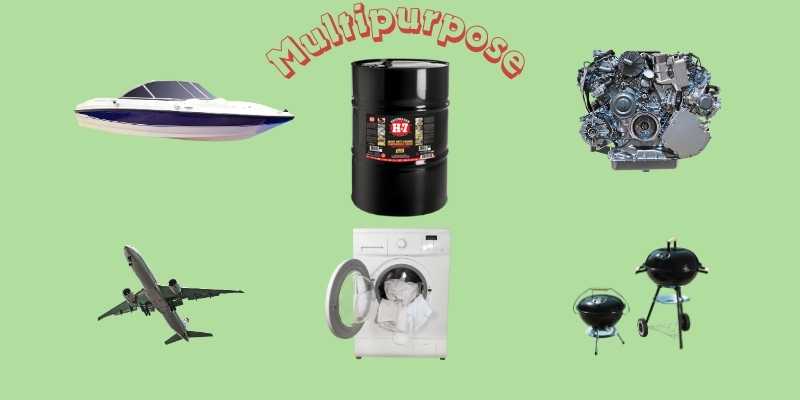
How to Store and Use Cleaning Products Safely
Proper storage and usage of cleaning products are essential for maintaining a safe and healthy environment in your home or workplace. Follow these guidelines to ensure the safe handling, storage, and usage of cleaning products:
1. Read and Follow Instructions
Always read the product labels and follow the manufacturer’s instructions carefully. Pay attention to recommended usage methods, dilution ratios, safety precautions, and storage guidelines provided on the packaging.
2. Store in a Safe Location
Store cleaning products in a cool, dry, and well-ventilated area away from direct sunlight and heat sources. Keep them out of reach of children and pets to prevent accidental ingestion or exposure.
3. Use Appropriate Personal Protective Equipment (PPE)
When handling cleaning products, especially those containing harsh chemicals, wear appropriate personal protective equipment (PPE) such as gloves, goggles, and masks to protect your skin, eyes, and respiratory system.
4. Avoid Mixing Chemicals
Never mix cleaning products unless specifically instructed to do so by the manufacturer. Mixing different chemicals can result in dangerous reactions, releasing toxic fumes or causing chemical burns.
5. Dispose of Properly
Dispose of empty or unused cleaning product containers according to local regulations. Avoid pouring chemicals down drains or into the environment. Consider recycling options for containers whenever possible.
6. Keep Labels Intact
Ensure that product labels remain intact and legible. Labels provide crucial information about ingredients, safety precautions, first aid measures, and contact information for emergencies.
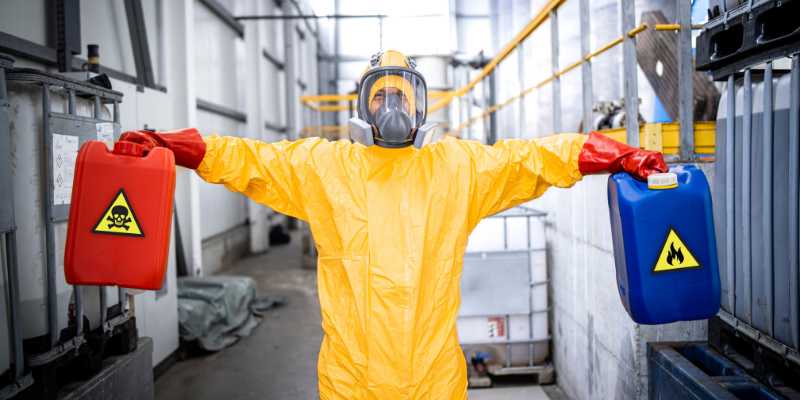
Environmental Impact and Sustainability
As awareness of environmental issues grows, it’s crucial to consider the environmental impact and sustainability of the cleaning products we use. Making eco-conscious choices can contribute to a healthier planet and reduce our carbon footprint. Here are key points to understand about the environmental impact and sustainability of cleaning products:
1. Eco-Friendly Ingredients
Choose cleaning products that prioritize eco-friendly ingredients derived from renewable sources. Look for plant-based surfactants, natural solvents, and biodegradable formulas that break down safely in the environment without harmful residues.
2. Biodegradability and Decomposition
Opt for cleaning products that are biodegradable and capable of breaking down into non-toxic substances over time. Biodegradable products reduce environmental pollution and minimize harm to aquatic life and ecosystems.
3. Packaging and Waste Reduction
Consider products with minimal or recyclable packaging to reduce waste and promote recycling efforts. Look for brands that use sustainable packaging materials and encourage responsible disposal practices.
4. Energy Efficiency
Choose cleaning products that promote energy efficiency during production, usage, and disposal. Energy-efficient manufacturing processes, concentrated formulas, and reduced water usage contribute to lower carbon emissions and environmental impact.
5. Certifications and Labels
Look for environmental certifications and labels such as EPA Safer Choice, Green Seal, or EcoLogo on cleaning products. These certifications indicate that the products meet strict environmental standards and have undergone testing for safety and sustainability.
6. Supporting Sustainable Brands
Support brands that prioritize sustainability throughout their operations, including sourcing practices, production methods, and waste management. By choosing sustainable brands, you encourage industry-wide efforts toward environmental responsibility.
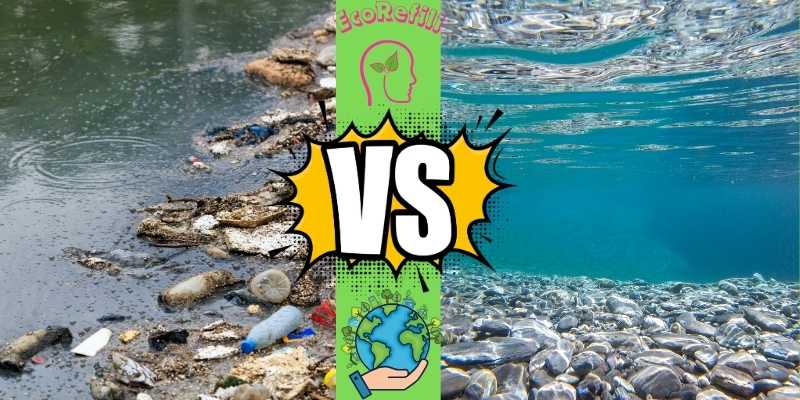
Conclusions and Final Recommendations
After exploring various aspects of cleaning products, their ingredients, usage, and environmental impact, it’s time to draw conclusions and provide final recommendations for making informed choices. Here are the key takeaways and recommendations:
1. Importance of Informed Choices
Making informed choices when selecting cleaning products is crucial for achieving effective cleaning results, ensuring safety, and minimizing environmental impact. By understanding product labels, ingredients, and usage guidelines, consumers can make smarter decisions.
2. Consideration of Ingredients
Prioritize cleaning products with eco-friendly, biodegradable ingredients that are safe for both human health and the environment. Avoid products containing harsh chemicals like ammonia, bleach, and phosphates, and opt for natural alternatives whenever possible.
3. Smart Purchasing Practices
Follow smart purchasing practices by comparing product prices, sizes, and value options. Choose multi-purpose cleaners, concentrated formulas, and eco-friendly options to save money, reduce waste, and promote sustainability.
4. Safe Handling and Usage
Always store and use cleaning products safely by following manufacturer instructions, wearing appropriate personal protective equipment (PPE), and avoiding chemical mixing. Dispose of empty containers responsibly and recycle whenever feasible.
5. Environmental Responsibility
Support brands that prioritize environmental responsibility, sustainable practices, and transparency in their product labeling. Look for certifications like EPA Safer Choice, Green Seal, or EcoLogo to ensure products meet rigorous environmental standards.
6. Continuous Learning and Improvement
Stay informed about new developments, innovations, and best practices in the cleaning product industry. Continuously educate yourself about safer and more sustainable cleaning alternatives to adapt and improve your cleaning routines.
In conclusion, making conscious choices about cleaning products is not only beneficial for your health and well-being but also for the planet. By considering ingredients, purchasing practices, safe handling, and environmental responsibility, you can contribute to a cleaner, healthier, and more sustainable future.
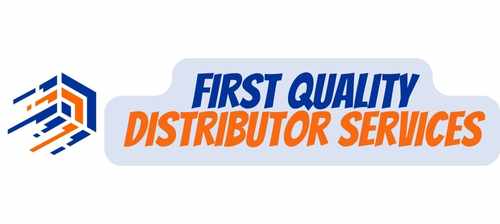

You’ve covered aspects of this topic I hadn’t seen discussed elsewhere. Impressive.
Hello Bryana Bogan. Thank you very much for your words of encouragement. I’m glad you like the content. We will always work to create content of practical value. Thank you again for reading our article.
Your insights are a guiding light.
Hello Briana Mann. Thank you, we really appreciate your comment. We look forward to continuing to serve our community. Again thank you very much.